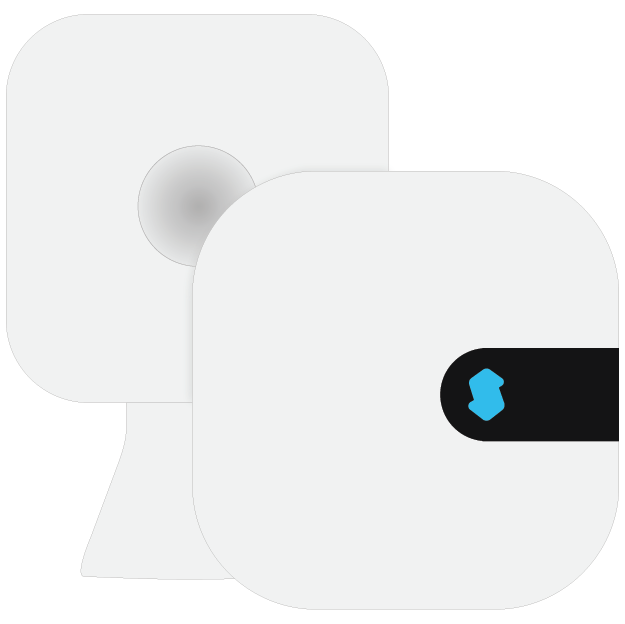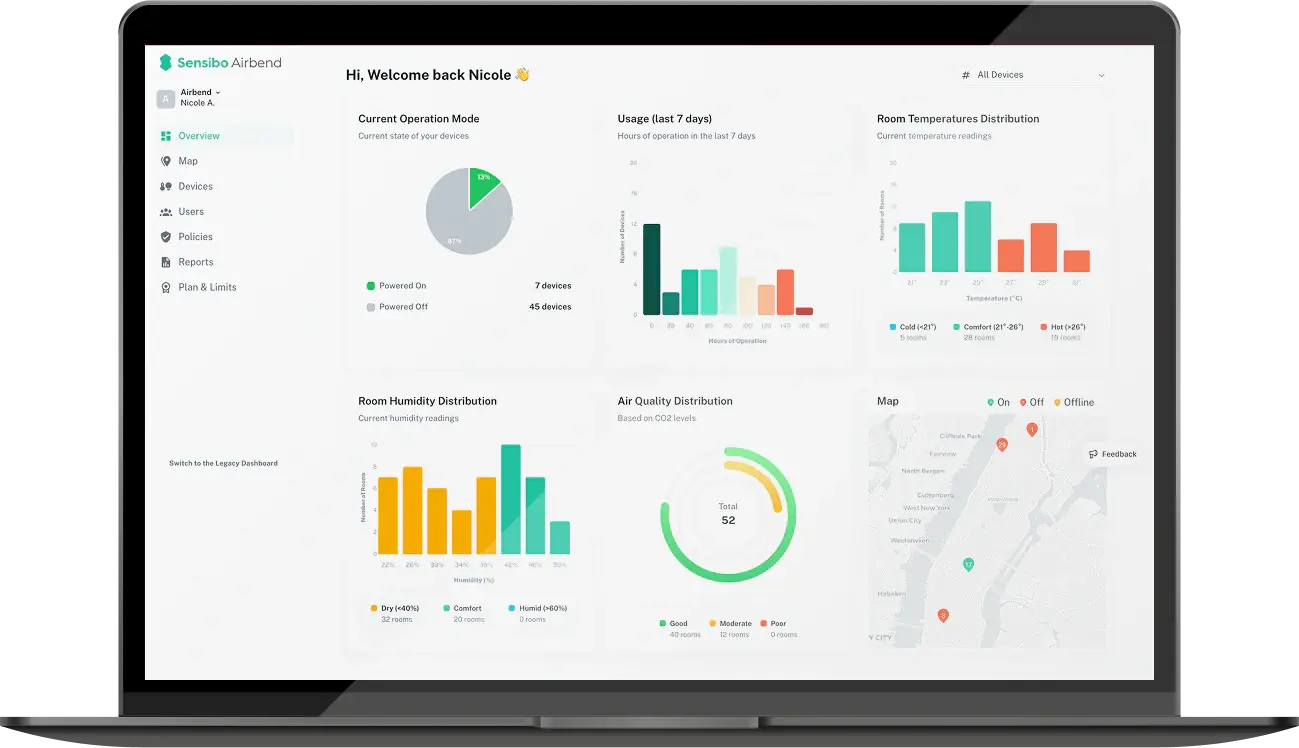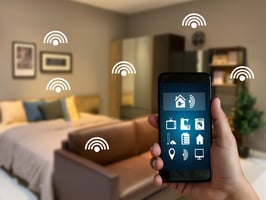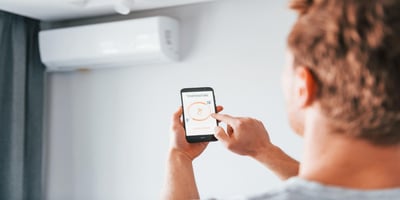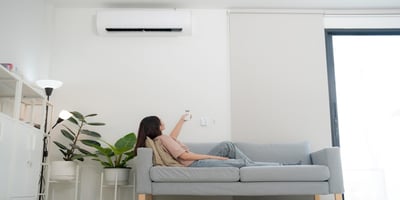Why Your AC Is Costing You More Than It Should — and How to Fix It
Summer electricity bills shock homeowners nationwide. Many pay 50-100% more than necessary for cooling. A typical two-bedroom home should cost $140-160 monthly to cool. Many families face bills exceeding $240 due to preventable efficiency problems. The good news is that systematic diagnosis and targeted solutions can reduce AC running costs by 20-40% without sacrificing your comfort. Most fixes cost less than one month's inflated electric bill.
Why Are Your AC Bills Still Too High?
You've heard this before: change your filters and don't set the thermostat too low. This is true enough. A dirty filter makes your system work harder, bumping up energy use by 5-15%. Basic air conditioner maintenance really matters.
However, focusing solely on filters and temperature settings misses the bigger picture. While clean filters help your system run efficiently, experienced HVAC professionals consistently find that homeowners achieve the largest cost reductions by addressing less obvious efficiency issues throughout their cooling system.
Overlooked Causes of Expensive AC
Several hidden factors can dramatically increase your cooling expenses beyond basic filter changes:
- Dirty evaporator and condenser coils: Dirt accumulates on these coils over time, even with clean filters. This creates an insulating layer that forces your system to run longer cycles to achieve the same cooling effect.
- Outdoor unit obstructions: Debris, overgrown vegetation, or inadequate clearance around condenser units cause struggles with efficient heat release. This restriction can increase energy consumption by 10-20% without obvious symptoms.
- Ductwork leaks: Researchers at Lawrence Berkeley National Lab found that duct systems leak on average about 10% of the supply air they move and 12% of the return air. Your system must overcool to compensate for this loss, causing AC running cost calculations to increase.
- Minor mechanical failures: Bent condenser fins, low refrigerant levels, and failing capacitors all cause your system to consume excess electricity while delivering reduced cooling performance.
Most homeowners never inspect their outdoor unit's surroundings or check for these issues. As a result, efficiency slowly deteriorates. Air conditioning troubleshooting often reveals that seemingly minor issues compound into major efficiency problems that dramatically increase monthly expenses.
How Can You Find Your AC's Energy Leaks?
 Step 1: Calculate Your True AC Running Cost
Step 1: Calculate Your True AC Running Cost
Determining your system's actual energy consumption comes first. Most central air conditioners consume 3,000-5,000 watts when running. Multiply your unit's wattage by your local electricity rate (typically $0.12-0.25 per kWh). This gives you hourly operating costs.
For example: A 4,000-watt system running at $0.15/kWh costs $0.60 per hour. During peak summer months, systems often run 8-12 hours daily. Daily cooling costs result in $4.80-7.20. Monthly totals can easily reach $150-220 for average-sized homes. Compare your calculated costs against actual utility bills. Bills that exceed these estimates indicate efficiency problems. Homes with proper AC energy efficiency typically see costs at the lower end of these ranges.
Step 2: The 5-Minute Visual Inspection
Walk around your outdoor condenser unit. Clear any debris within two feet of the unit. This includes leaves, grass clippings, and any other vegetation. Check that the top discharge area remains unobstructed. Many units suffer from blocked airflow due to overgrown shrubs or stored items.
Examine the aluminum fins on your outdoor unit. Bent or damaged fins restrict airflow. They reduce heat transfer efficiency. Professionals can straighten these fins. Homeowners can prevent damage by keeping lawn mowers and trimmers away from the unit.
Inside your home, inspect air vents for blockages. Furniture blocks airflow. Curtains create problems. Closed dampers cause pressure imbalances that force your system to work harder. Air conditioning troubleshooting basics include ensuring all supply vents remain open and unobstructed.
Step 3: The Smart Monitoring Test
Install a smart plug or energy monitor on your indoor unit. Track actual consumption patterns with this device. The data reveals whether your system cycles efficiently or runs continuously due to underlying problems.
Red flags that indicate efficiency problems include:
- Temperature swings greater than 3-4 degrees between cycles
- The system running continuously for more than 45 minutes
- Temperature differences between rooms (more than 5 degrees)
- Indoor humidity levels consistently above 60%
- Unusual sounds during operation
Track humidity levels alongside temperature. High indoor humidity makes spaces feel warmer, which encourages lower thermostat settings. Proper dehumidification allows comfortable temperatures at higher settings. Overall energy consumption reduces as a result.
Smart Thermostat Settings That Actually Save Money

The standard recommendation suggests 78°F when you are home. However, optimal thermostat settings depend on your specific situation. Homes with good insulation and sealed ductwork can maintain comfort at higher temperatures. Poorly insulated homes may require lower settings to feel comfortable.
Finding your family's actual comfort zone requires gradual adjustment. Start at 78°F. Increase by one degree daily until you reach your comfort limit. Many homeowners discover they can tolerate 80-81°F with proper humidity control and air circulation.
Pre-cooling strategies can reduce cooling bill totals. Take advantage of off-peak electricity rates. Cool your home to 76-77°F during cheaper morning hours. Then allow temperatures to drift to 79-80°F during expensive peak periods. Well-insulated homes can maintain comfortable conditions for hours without active cooling.
Smart Scheduling for Maximum Savings
Program different temperature schedules based on occupancy patterns. Everyone leaves for work and school? Raise the thermostat 7-10 degrees. This adjustment can save 5-15% on cooling costs without affecting comfort. Weekend schedules often differ from weekday patterns. Smart thermostats can accommodate these variations automatically. They optimize for both occupied and unoccupied periods.
Vacation settings offer substantial savings opportunities. Raise temperatures to 85-88°F when away for extended periods. Maintain some cooling to prevent humidity and air quality problems.
Advanced Features That Cut Costs
Modern smart thermostats integrate weather forecasting to optimize cooling schedules. On cooler days, they can pre-cool homes using less energy. Humidity control features allow higher temperature settings while maintaining comfort. Indoor humidity stays below 50%? Most people feel comfortable at temperatures 2-3 degrees higher than in humid conditions.
Energy usage tracking helps identify consumption patterns and optimization opportunities. Monthly reports reveal seasonal efficiency trends. They highlight periods of unusually high electricity bill totals.
Smart Upgrades Worth the Investment
Smart AC controllers typically pay for themselves within 6-18 months through improved scheduling and monitoring capabilities. These devices retrofit existing systems with advanced features. Remote control, usage tracking, and weather-based optimization become available.
Cost-to-benefit analysis for common upgrades:
|
Upgrade Type |
Initial Cost |
Annual Savings |
Payback Period |
|
Smart AC Controller |
$150-300 |
$180-360 |
6-18 months |
|
Variable Speed Fan |
$800-1,500 |
$200-400 |
2-4 years |
|
Duct Sealing |
$300-800 |
$150-300 |
1-3 years |
Zoning systems allow independent temperature control for different areas. This prevents overcooling of unused spaces. In larger homes, zoning can reduce energy consumption by 20-30% while improving comfort.
What Else Can Boost Your Cooling Efficiency?
Basic upkeep and smart thermostat changes are just the beginning of ways to lower cooling costs. The best way to save money is typically to think of your home as a whole system.
- Home envelope improvements
Beef up your attic insulation first – southern homes need 13-14 inches, northern homes need 16-18 inches. Good window coverings cut heat gain by 30-70%. Light-colored blinds, reflective films, or cellular shades stop heat before it gets inside. Seal gaps around windows and doors for under $200. This simple fix cuts cooling costs 10-20%.
- Complementary cooling systems
Ceiling fans let you set the thermostat 4 degrees higher while staying comfortable. Moving air makes 82°F feel like 78°F on your skin. Smart fan placement can help reduce cooling bill costs significantly. Dehumidifiers tackle sticky air that makes you crank down the thermostat. Drier air feels cooler, so you can live comfortably at higher temperatures.
- Smart home integration
Motion sensors turn off the cooling when rooms sit empty. Weather-connected systems pre-cool your house during cheaper morning hours, then coast through expensive peak times. Real-time energy monitors show exactly where your money goes each month. You'll spot wasteful habits and successful changes right away.
Can Smart Tech Really Reduce Your AC Bills?
 Real-Time Monitoring and Control
Real-Time Monitoring and Control
Smart AC controllers provide detailed insights into system performance and energy consumption patterns. Traditional thermostats operate blindly. These devices track AC running cost data and identify optimization opportunities. Remote control capabilities allow homeowners to adjust settings from anywhere. This prevents wasted energy when plans change unexpectedly. Mobile apps provide energy usage alerts. They offer efficiency recommendations based on actual consumption data. Automated scheduling features learn from usage patterns and weather forecasts. They optimize cooling without manual intervention. These systems can reduce energy consumption by 40% through intelligent automation.
Predictive Cost Management
Advanced systems analyze consumption trends to predict future high electricity bill periods. This allows proactive adjustments to avoid cost spikes. Weather forecasting integration helps optimize pre-cooling strategies and peak-hour avoidance. Maintenance scheduling based on actual runtime hours ensures air conditioner maintenance occurs when needed rather than at arbitrary calendar intervals. This approach prevents efficiency degradation while avoiding unnecessary service calls. Usage pattern analysis reveals opportunities for additional savings through schedule optimization, equipment upgrades, and behavioral changes that compound over time to deliver substantial reductions in monthly cooling expenses.
Ready to Take Control of Your AC Costs?
Start with immediate wins. Replace filters. Clear outdoor unit obstructions. Adjust thermostat settings to 78°F or higher. These simple changes can reduce costs by 10-15% within the first month. Implement smart monitoring to understand your actual consumption patterns. This helps identify specific efficiency problems. Knowledge of your system's performance enables targeted improvements rather than guesswork.
Consider professional air conditioning troubleshooting if basic maintenance doesn't yield expected savings. Systematic diagnosis and repair of underlying efficiency problems can deliver substantial reductions in monthly cooling expenses while improving comfort and reliability.
FAQ
How much money can I actually save on my AC bill?
Most homeowners see 15-25% savings with basic improvements like filter changes and thermostat adjustments. Comprehensive upgrades can cut cooling costs by 40% or more.
When should I replace my old AC unit instead of just maintaining it?
If your system is over 15 years old and repair costs exceed $1,000 annually, replacement usually makes financial sense. New units are dramatically more efficient than older models.
Are smart thermostats really worth the cost?
Smart thermostats typically pay for themselves within 6-18 months through energy savings. They're especially valuable for families with varying schedules.
How often do I actually need to change my AC filter?
Check monthly during heavy use periods and replace when it looks dirty. Most homes need new filters every 1-3 months, depending on dust levels and pets.
Should I close vents in rooms I don't use to save energy?
No, closing vents creates pressure imbalances that can damage your system and actually increase energy use. Keep all vents open for proper airflow.


